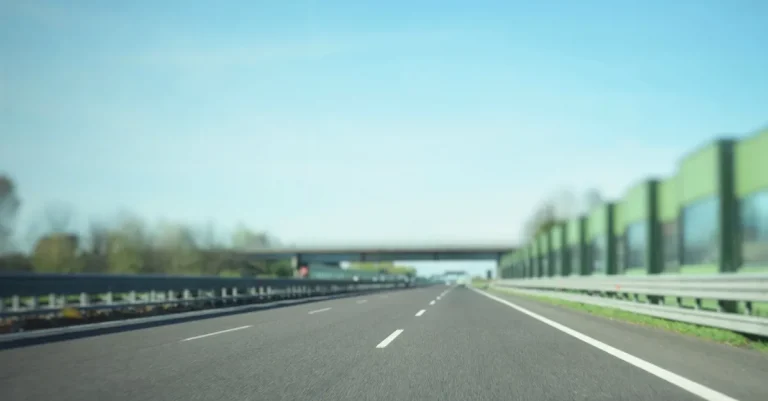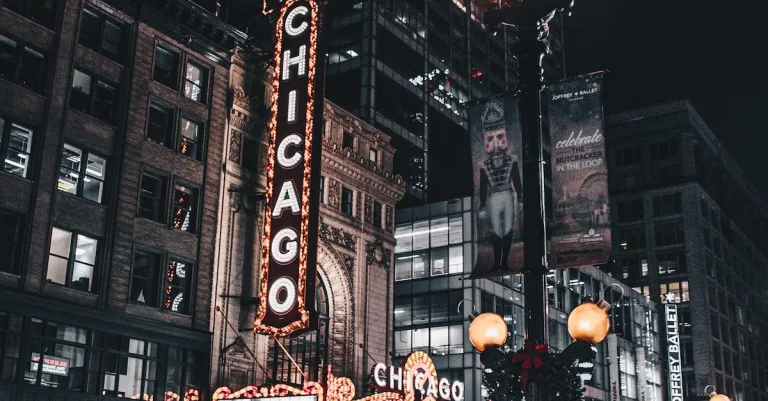How To Get Replacement License Plates In California
Has your license plate been damaged or lost? Need to replace it with a brand new plate? Getting replacement license plates in California is fairly straightforward, but the process differs depending on your situation. In this comprehensive 3000 word guide, we’ll outline everything you need to know to get new California license plates.
If you just need the basics: You can get replacement plates by visiting your local DMV office and filling out the Application for Replacement Plates, tags, or stickers (REG 156) form. You’ll have to surrender your current plates if you still have them, and pay a replacement fee.
When You Need New Plates
There are several situations where you may need to get replacement license plates in California. Here are some common scenarios:
1. Lost or Stolen Plates
If your license plates have been lost or stolen, it’s important to get them replaced as soon as possible. Not only is it illegal to drive without proper plates, but it also increases the risk of identity theft or fraudulent activity.
To report lost or stolen plates, you’ll need to contact your local law enforcement agency and fill out a police report. Once you have the report, you can proceed with getting replacement plates.
2. Damaged Plates
Over time, license plates can become damaged due to various reasons such as accidents, wear and tear, or even vandalism. If your plates are illegible or severely damaged, it’s advisable to get them replaced to avoid any issues with law enforcement or vehicle registration.
To get replacement plates for damaged ones, you’ll need to visit your local Department of Motor Vehicles (DMV) office and provide them with the necessary documentation. This may include your driver’s license, vehicle registration, and the damaged plates themselves.
3. Personalized Plates
If you currently have personalized license plates and wish to transfer them to a new vehicle, you’ll need to go through the process of getting replacement plates. This ensures that your personalized plates remain associated with your new vehicle.
To transfer personalized plates, you’ll need to visit the DMV and provide them with the required paperwork, including your current registration, proof of insurance, and the new vehicle’s information.
4. Out-of-State Move
If you recently moved to California from another state and need to register your vehicle, you’ll need to get new license plates. Each state has its own unique license plate design and numbering system, so it’s necessary to obtain California plates to comply with state regulations.
To get new license plates as an out-of-state resident, you’ll typically need to visit the DMV, provide proof of residency in California, and present your out-of-state vehicle registration and insurance documents.
Remember, it’s important to follow the proper procedures and regulations when obtaining replacement license plates in California. For more detailed information, you can visit the official California DMV website at www.dmv.ca.gov.
Getting Standard Replacement Plates
If you find yourself in the unfortunate situation of needing replacement license plates in California, don’t worry. The process is relatively straightforward and can be done either online or in person at your local Department of Motor Vehicles (DMV) office.
Online Application
If you prefer the convenience of applying for replacement plates from the comfort of your own home, you can do so through the California DMV website. Simply visit their website and navigate to the “Replace” section.
From there, you will be prompted to enter your personal information, including your name, address, and vehicle identification number (VIN). You will also need to provide a reason for the replacement, such as loss or theft.
Once you’ve completed the application and paid the necessary fees, your new plates will be mailed to you.
In-Person Application
If you prefer to handle the process in person, you can visit your local DMV office. Be sure to bring your driver’s license or ID card, proof of vehicle ownership, and any necessary documentation regarding the reason for the replacement.
The DMV staff will assist you with the application and guide you through the necessary steps. Depending on the workload at the office, you may be able to walk out with your new plates the same day.
Important Considerations
Before applying for replacement plates, it’s important to note that there are certain fees associated with the process. The exact amount will depend on the type of plates you are replacing and whether you opt for personalized or specialized plates. The fees can range from $20 to $50.
It’s also worth mentioning that the replacement plates will have the same expiration date as your original plates.
In some cases, you may need to surrender your old plates when you receive the replacements. This is typically required if your plates were lost or stolen to prevent fraudulent use. The DMV staff will provide you with instructions on how to properly surrender the old plates.
Remember, having valid license plates is not only a legal requirement but also essential for identification purposes. If your plates are damaged, lost, or stolen, be sure to take prompt action to get them replaced. Failure to do so may result in fines or even legal consequences.
For more information on replacing your license plates in California, visit the official California DMV website at www.dmv.ca.gov.
Specialty & Personalized Plates
If you’re looking to add a personal touch to your vehicle, California offers a variety of specialty and personalized license plates. These plates allow you to express your interests, hobbies, or support for a cause.
They are a great way to stand out on the road and add a touch of uniqueness to your vehicle.
Types of Specialty Plates
California offers a wide range of specialty plates to choose from. Whether you’re a sports fan, a nature enthusiast, or a military supporter, there’s a plate for you. Some of the popular specialty plates include:
- Sports plates: Show your support for your favorite sports team with a plate featuring their logo or colors.
- Wildlife plates: Display your love for nature with plates featuring iconic California wildlife.
- Charity plates: Support a cause close to your heart by opting for a plate that donates a portion of the fee to a specific charity.
- Military plates: Honor veterans and active-duty military personnel with specialized plates that show your appreciation.
Personalized Plates
If you want to go beyond specialty plates, California also offers personalized plates. With personalized plates, you can choose a combination of letters and numbers to create a unique message for your vehicle.
However, it’s important to remember that there are certain restrictions when it comes to personalized plates. Offensive or inappropriate messages will not be approved, so make sure to keep it tasteful and within the guidelines set by the Department of Motor Vehicles.
How to Get Specialty & Personalized Plates
To get a specialty or personalized plate in California, you will need to follow these steps:
- Visit the California Department of Motor Vehicles website at www.dmv.ca.gov to check if your desired plate combination is available.
- Fill out the appropriate application form and pay the required fee.
- If your application is approved, you will receive your new plates in the mail.
- Remove your old plates and replace them with your new specialty or personalized plates.
It’s important to note that specialty and personalized plates may have additional fees and requirements, so make sure to check the California DMV website for the most up-to-date information.
Now that you know how to get specialty and personalized plates in California, it’s time to add a personal touch to your vehicle and hit the road with style!
Fees For Replacement Plates
When it comes to getting replacement license plates in California, there are certain fees that you need to be aware of. The California Department of Motor Vehicles (DMV) charges a fee for replacing license plates that have been lost, stolen, or damaged.
The fee varies depending on the type of vehicle you have and whether you want new standard plates or specialized plates.
Standard License Plates
If you simply need new standard license plates, the fee for replacement is typically around $22. This fee covers the cost of manufacturing and issuing the new plates. It’s important to note that this fee is subject to change, so it’s always a good idea to check the DMV’s website for the most up-to-date information.
Specialized License Plates
If you have specialized plates, such as personalized plates or special interest plates, the fee for replacement may be higher. The exact fee will depend on the specific type of specialized plates you have.
For example, personalized plates typically have an additional fee for the customization, so the replacement fee may be higher than $22.
It’s worth mentioning that if your specialized plates are stolen, you should file a police report before applying for replacement plates. This will help protect you in case the stolen plates are used for illegal activities.
Additional Fees
In addition to the replacement fee, there may be other fees associated with getting new license plates. For example, there may be a fee for updating your registration with the new plates or transferring your personalized plate message to the new plates.
These fees can vary, so it’s important to check the DMV’s website for the most accurate and up-to-date information.
Keep in mind that these fees are subject to change and may vary depending on your specific situation. It’s always a good idea to check with the California DMV directly or visit their website www.dmv.ca.gov for the most accurate and current fee information.
Reporting Lost or Stolen Plates
If you have lost your license plates or they have been stolen, it is important to report it immediately to the proper authorities. Not only is it a legal requirement, but it also helps protect you from any potential liability if someone were to misuse your plates.
Here are the steps to follow when reporting lost or stolen plates in California:
Contact the Police
The first thing you should do is contact your local police department and file a police report. This will document the loss or theft of your plates and will be important for any future investigations. Provide them with all the necessary information, such as your license plate number, vehicle identification number (VIN), and any other details that might help in the investigation.
Remember to obtain a copy of the police report for your records.
Notify the California Department of Motor Vehicles (DMV)
After filing a police report, you should contact the California DMV to report the lost or stolen plates. You can do this either by visiting a local DMV office or by calling their toll-free number. The DMV will guide you through the process of obtaining replacement plates and will require certain documents, such as the police report, vehicle registration, and identification.
Replace Your Plates
Once you have notified the police and the DMV, you can proceed to replace your lost or stolen plates. The DMV will provide you with the necessary forms to complete and submit. There may be a fee associated with obtaining replacement plates, so be prepared to pay the required amount.
The new plates will have a different license plate number to prevent any misuse of your old plates.
It is important to note that driving without license plates or with stolen plates is illegal and can result in fines or other penalties. By promptly reporting the loss or theft of your plates, you not only comply with the law but also ensure your own safety and security.
Remember to keep all documentation related to the incident and the replacement of your plates, as they may be needed for future reference.
Conclusion
Replacing your lost, damaged or outdated California license plates is a relatively painless process. By following the DMV procedures outlined here and filing the proper paperwork, you can get new plates issued quickly. We’ve covered all the key steps – from determining when you need replacements to acquiring specialty or personalized plates.
Our guide provides everything you need to know to smoothly handle a license plate replacement. With this knowledge in hand, you can get your car properly registered with new plates issued by the California DMV.








